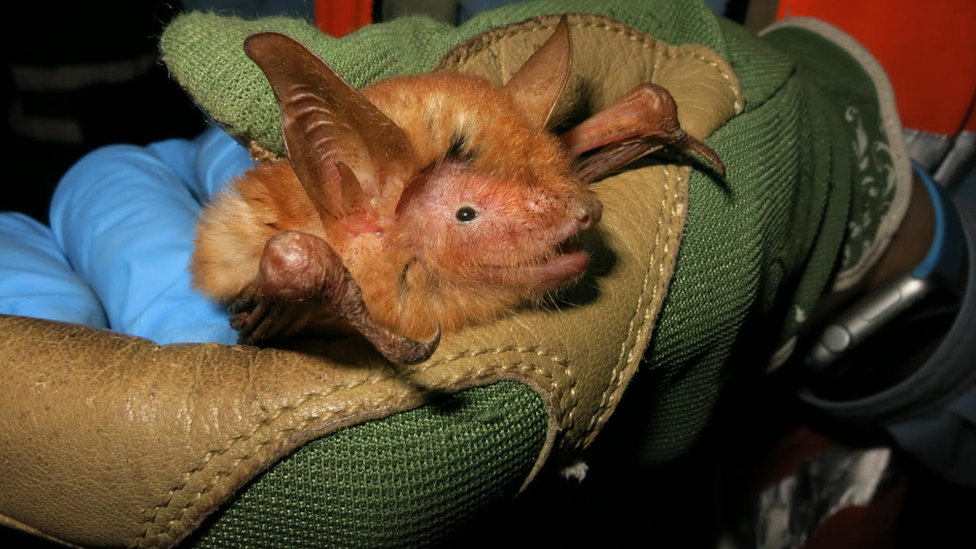Ancient bones shine light on new bat species
- Published
- comments
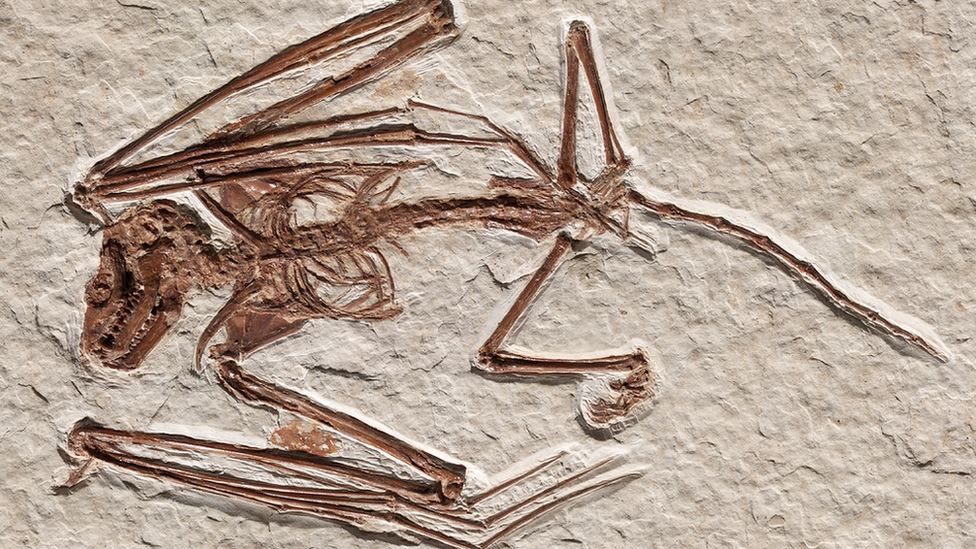
Two of the oldest bat skeletons in the world have been discovered in the US.
The ancient bat skeletons are thought to be around 52 million years old, and were found in the Green River Formation in Wyoming.
Researchers think the bats could also belong to a never-before-seen species named Icaronycteris gunnelli.
"When I first saw the first skeleton, I immediately thought it was different," said Tim Rietbergen a bat paleontologist and manager at the Naturalis Biodiversity Center in The Netherlands.
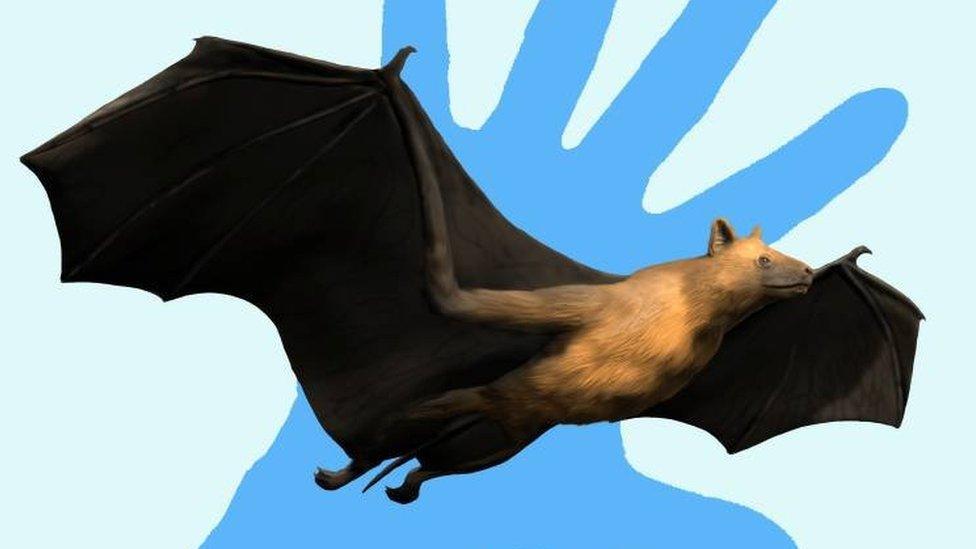
An artists drawing of what Icaronycteris bats might have looked like
Bats are the only mammals in the world to be able to fly properly, and they play a very important part of the world's ecosystem by helping to spread plant pollen and seeds, and control insect populations.
The furry flying creatures have been around since the Eocene epoch - a time period from around 56 million to 36 million years ago.
Until now the oldest skeletons scientists had found of bats were around 50 million years old.
There are more than 1,400 species of bats in the world!
The only places on Earth with no bats are the Arctic, Antarctic and a few remote islands.
Indonesia has 175 species of bats (about ten times the number of species found in the UK).
Central and South America are home to almost one third of the world's bats species.
By looking at the teeth and bones of the Icaronycteris gunnelli fossil, the researchers discovered that it was different to any species we know today.
"After comparing the measurements with other bats, it clearly stood out as being a different species," Tim Rietbergen said.
"I got super excited, and was wondering, that perhaps the bat diversity from the early Eocene was much higher than we thought."
The researchers think the bats would have weighed around 22.5-28.9 g when it was alive, and been able to fit into a human hand with its wings folded against its body.
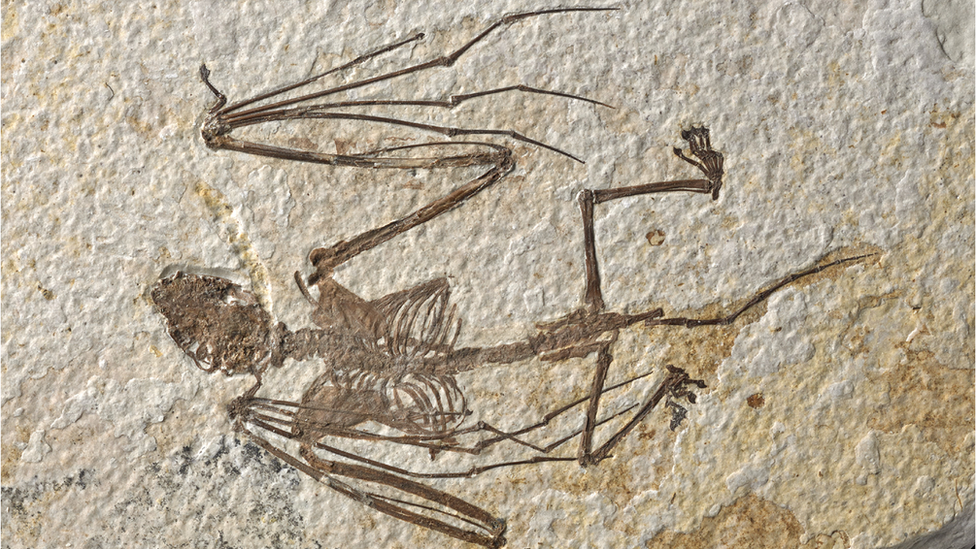
Icaronycteris bats were thought to be the earliest to use echolocation - a technique using sound to help them to find their prey
The smallest bat in the world is the Bumblebee bat which weighs only two grams!
One of the largest bats is the Golden Crowned Flying Fox, which lives in the Philippines and has a wingspan of up to 5'6 - that's as big as an adult human! - thankfully they only eat fruit!
This new discovery which the researchers published in the science journal PLOS One, means that scientists have had to change the way bats are classified, to include the new bat species.
"This newly described species is considered as one of the oldest known articulated bat skeletons, providing novel insight into the phylogeny of our earliest bat fossils," said Emma Teeling a professor of zoology at University College Dublin in Ireland.
"There is still a lot that we don't know," said Tim Rietbergen. "Once we have a good view on the bat diversity, we can study evolutionary adaptations and perhaps find hints that will bring us closer to the discovery of the ancestor of bats."
- Published22 August 2021
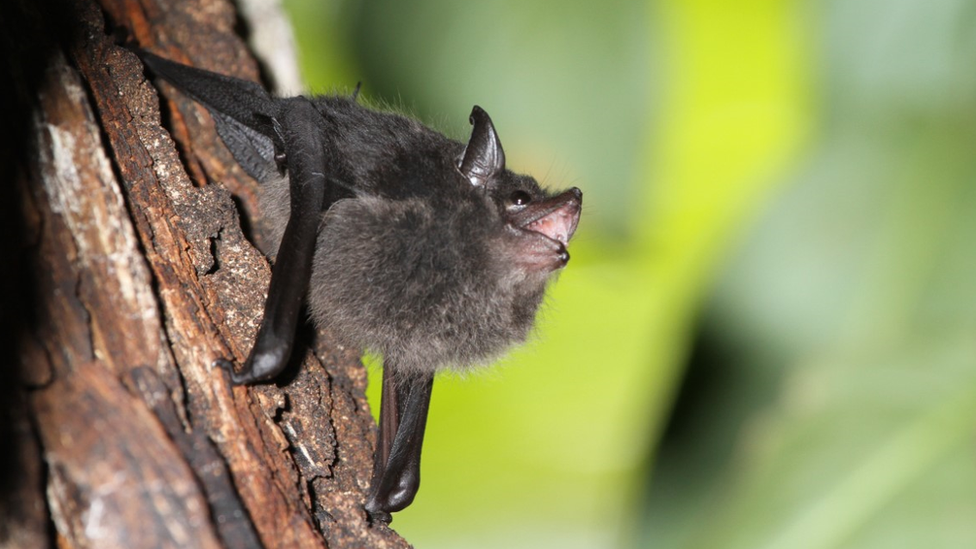
- Published30 August 2019
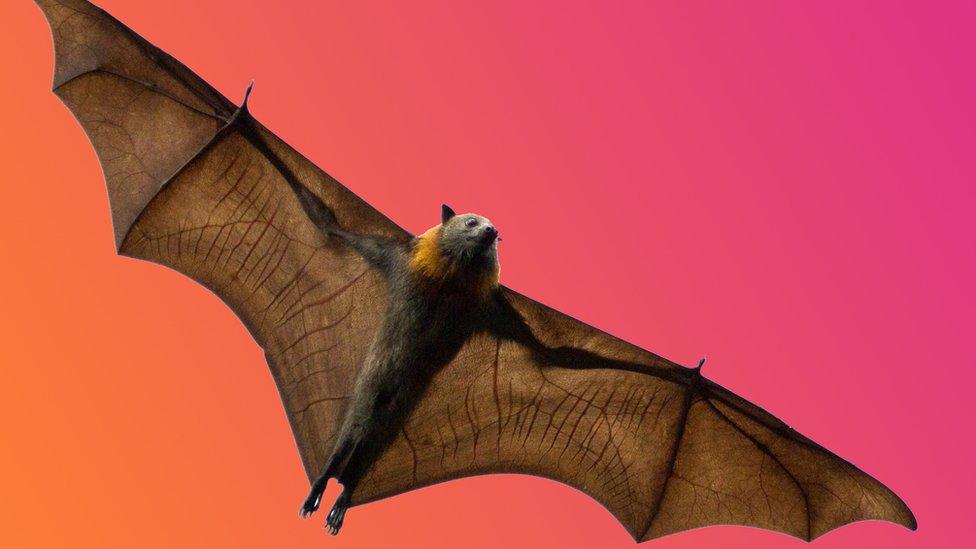
- Published25 January 2021
